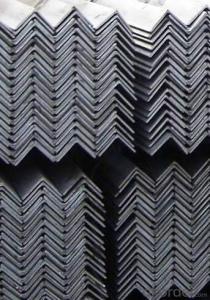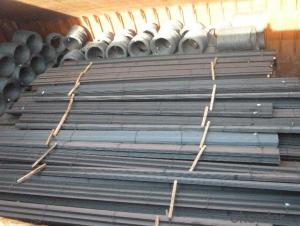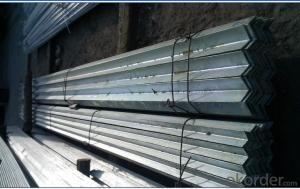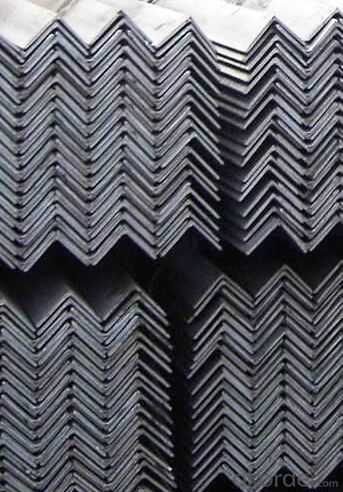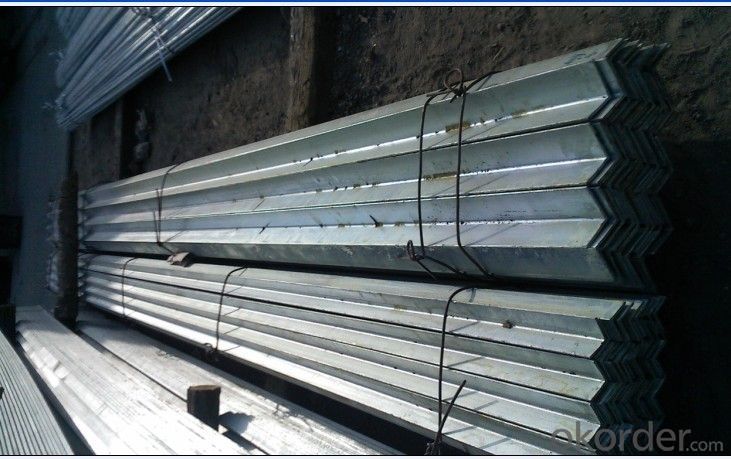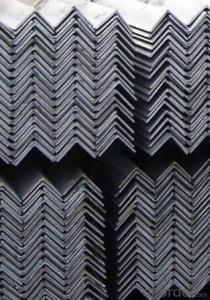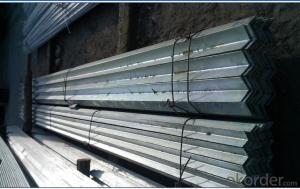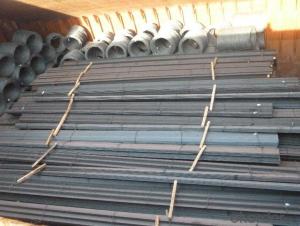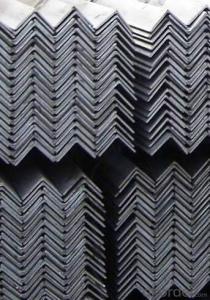DIN STANDARD HIGH QUALITY HOT ROLLED ANGLE
- Loading Port:
- Tianjin
- Payment Terms:
- TT OR LC
- Min Order Qty:
- 50 m.t.
- Supply Capability:
- 100000 m.t./month
OKorder Service Pledge
OKorder Financial Service
You Might Also Like
Product Description
Appearance: Black
Technique: Slitting hot rolled steel coil
Grade: Q235, Q195,A36 SS400 S235jr.St37-2
Standard: AISI,GB,DIN,ASTM,EN,JIS
Length: 6m, 9m, 12m or as your requirement.
Width: 10mm-1010mm
Thickness: 1.5mm-20mm
Business type: big manufacture
Place of origin: Tianjin China (Mainland)
Packaging Details: In bundles for exporting and sea worthy
Delivery Detail: Within 15-35 days after receiving L/C or deposite T/T
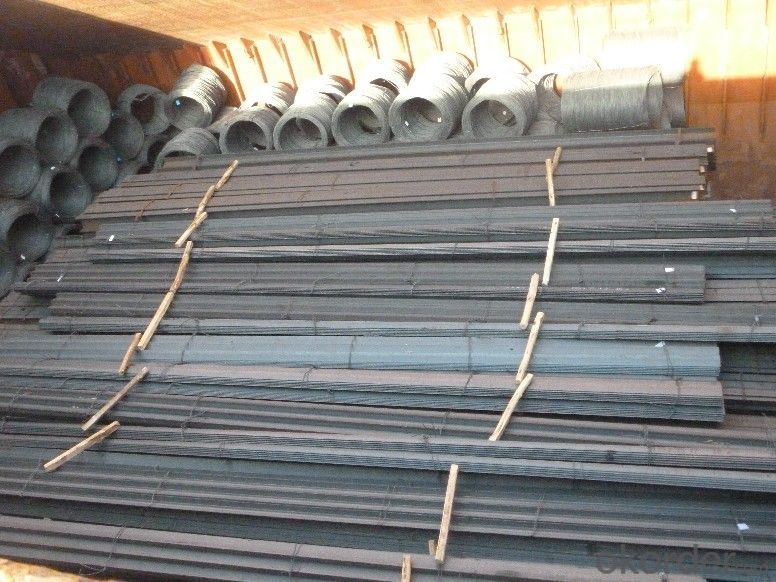
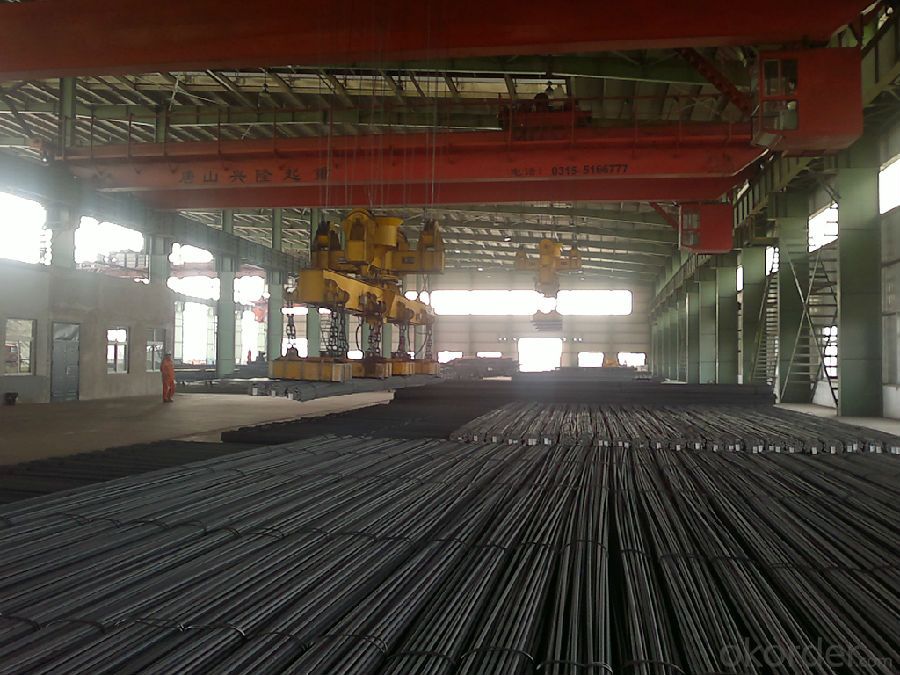
General specification as below:
Flat Bar Specification | |||
Width (mm) | Thickness (mm) | Length (m) | Theoretical Weight (kg/m) |
20 | 2.0 | 6/9/12 | 0.31 |
20 | 2.5 | 6/9/12 | 0.39 |
20 | 2.75 | 6/9/12 | 0.43 |
25 | 2.5 | 6/9/12 | 0.49 |
25 | 3.75 | 6/9/12 | 0.74 |
30 | 2.5 | 6/9/12 | 0.59 |
30 | 3.5 | 6/9/12 | 0.82 |
30 | 9.75 | 6/9/12 | 2.30 |
40 | 3.5 | 6/9/12 | 1.10 |
40 | 4.75 | 6/9/12 | 1.50 |
40 | 11.75 | 6/9/12 | 3.69 |
50 | 2.75 | 6/9/12 | 1.08 |
50 | 4.5 | 6/9/12 | 1.77 |
50 | 9.75 | 6/9/12 | 3.83 |
60 | 5.5 | 6/9/12 | 2.60 |
60 | 7.5 | 6/9/12 | 3.53 |
60 | 11.5 | 6/9/12 | 5.42 |
80 | 5.5 | 6/9/12 | 3.45 |
80 | 7.5 | 6/9/12 | 4.71 |
80 | 11.75 | 6/9/12 | 7.38 |
100 | 3.25 | 6/9/12 | 2.55 |
100 | 4.75 | 6/9/12 | 3.73 |
100 | 7.5 | 6/9/12 | 5.89 |
120 | 9.75 | 6/9/12 | 9.18 |
120 | 11.75 | 6/9/12 | 11.07 |
150 | 9.75 | 6/9/12 | 11.48 |
150 | 11.5 | 6/9/12 | 13.54 |
150 | 13.5 | 6/9/12 | 15.90 |
160 | 11.75 | 6/9/12 | 14.76 |
200 | 9.5 | 6/9/12 | 14.92 |
250 | 5.75 | 6/9/12 | 11.28 |
340 | 7.75 | 6/9/12 | 20.68 |
Products Advantages
1. high quality competitive price and Accurate in size
2. high dimensional accuracy
3. Guaranteed raw material
4.high utilization rate of material
5.convenient in construction, saving much time and labor
6. high mechanical strength
Application: Widely used for construction, Ship building, Machinery manufacturing ,steel structure,agriculture and steel grating.
- Q: Can steel angles be used for architectural purposes?
- Certainly, steel angles can be utilized for architectural purposes. These versatile structural components find application in a myriad of architectural scenarios. Their primary function often involves providing crucial support and stability during building construction. For example, steel angles are employed as lintels or beams, effectively bearing the weight of walls, roofs, or floors. Furthermore, they serve as columns or braces, bolstering the overall structural integrity of a building. Moreover, steel angles can serve as decorative elements within architectural designs, imparting a contemporary and industrial aesthetic to the structure as a whole. Architects and engineers frequently opt for steel angles due to their robustness, resilience, and malleability when designing and erecting buildings.
- Q: Can steel angles be used for support beams?
- Certainly, support beams can be made from steel angles. Steel angles are frequently employed in construction as structural components because of their robustness and longevity. They offer exceptional support and stability, rendering them appropriate for a range of purposes, including serving as support beams. Steel angles are frequently utilized to reinforce and uphold structures like buildings, bridges, and platforms. They can be easily joined through welding or bolting to form a sturdy and steady framework. Steel angles are available in various sizes and thicknesses, allowing for customization and adaptation to meet specific load-bearing requirements. All in all, steel angles are a dependable and widely used choice for support beams in construction endeavors.
- Q: Are steel angles suitable for manufacturing structural beams?
- Yes, steel angles are suitable for manufacturing structural beams. Steel angles are versatile and commonly used in construction for their strength, durability, and ability to support heavy loads. They can be easily welded or bolted together to form beams of various lengths and sizes, making them a popular choice in structural engineering.
- Q: What are the different design considerations for steel angles in architectural applications?
- When incorporating steel angles into architectural applications, there are various factors to consider. These factors encompass load-bearing capacity, structural integrity, aesthetics, design flexibility, and corrosion resistance. Load-bearing capacity is a primary concern when using steel angles in architectural applications. They are often employed for structural support purposes, so it is essential to ensure they can withstand the anticipated loads. This necessitates calculating the maximum load they will bear and selecting angles of appropriate size and thickness to handle these loads safely. Structural integrity is another crucial consideration. Architects and engineers must take into account factors such as the angles' resistance to bending, buckling, and shear. The design must also consider their ability to distribute loads evenly, minimizing the risk of failure or deformation. Aesthetics also hold significant importance in architectural design, and steel angles can contribute to the overall visual appeal of a building. By incorporating angles with different profiles, finishes, or decorative elements, architects can enhance the design and create visually appealing structures. It is crucial for the angles to complement the overall architectural style and seamlessly blend with other building materials. Design flexibility is another vital consideration. Architects often require angles that can be easily customized or fabricated to meet their specific design requirements. Steel angles offer the ability to be cut, welded, or bent, allowing for the creation of unique shapes and angles and enabling creative architectural solutions. Lastly, it is important to evaluate the material properties and corrosion resistance of the steel angles. Architects need to assess the environmental conditions of the project site and choose angles that can withstand exposure to moisture, chemicals, or other corrosive agents. Applying proper coatings or treatments can protect the angles from corrosion and ensure their longevity. In conclusion, the design considerations for steel angles in architectural applications include load-bearing capacity, structural integrity, aesthetics, design flexibility, and corrosion resistance. By carefully examining these factors, architects can select steel angles that fulfill both the functional and visual requirements of their projects, resulting in safe, durable, and visually appealing architectural structures.
- Q: How do you specify steel angles in a construction project?
- In a construction project, steel angles are specified based on their dimensions, grade, and any additional requirements. The dimensions of a steel angle are typically specified as the length of each leg and the thickness of the material. For example, a common specification might be "2-inch by 2-inch by 1/4-inch steel angle". The grade of steel angle is also important to specify as it determines the strength and durability of the material. Common grades for steel angles include A36, A572, and A588. The specific grade chosen will depend on the structural requirements and environmental conditions of the project. In addition to dimensions and grade, any additional requirements such as corrosion resistance, fire resistance, or special finishes should also be specified. For example, if the steel angles will be exposed to outdoor elements, they may need to be hot-dip galvanized or coated with a protective paint. It is important to consult relevant codes and standards, such as the American Institute of Steel Construction (AISC) manual, for guidance on specifying steel angles in a construction project. These codes provide guidelines on allowable stress, design criteria, and other factors to ensure the safe and efficient use of steel angles in structural applications.
- Q: How do steel angles contribute to the sustainability of a city?
- Steel angles contribute to the sustainability of a city in various ways. Firstly, they are commonly used in construction, providing structural support and stability to buildings and infrastructure. Due to their high strength-to-weight ratio, steel angles require less material and resources compared to other building materials, reducing the overall environmental impact of construction. Additionally, steel angles are highly durable, corrosion-resistant, and have a long lifespan, reducing the need for frequent replacements or repairs, thus minimizing waste generation. Moreover, steel is a recyclable material, and steel angles can be easily recycled and repurposed, decreasing the demand for new steel production and conserving natural resources. Therefore, the use of steel angles in construction promotes sustainable practices, contributes to the efficient use of resources, and helps create resilient and long-lasting cities.
- Q: What are the limitations of using steel angles in highly corrosive or chemical environments?
- The limitations of using steel angles in highly corrosive or chemical environments stem from the inherent nature of steel and its vulnerability to corrosion. To begin with, steel angles are primarily composed of carbon steel, which has a tendency to rust when exposed to moisture or chemicals. In environments with high corrosion potential, such as those containing acids, alkalis, or saltwater, the steel angles may corrode at an accelerated rate, which can compromise their structural integrity. Additionally, these steel angles may also experience pitting corrosion in such environments. Pitting corrosion occurs when localized chemical reactions result in the formation of small pits or holes on the steel surface. This phenomenon weakens the angles and diminishes their load-bearing capacity. Another drawback is that steel angles may lack resistance to specific chemicals or substances. Certain chemicals can trigger reactions with the steel, leading to degradation or even catastrophic failure. For example, strong acids or bases can inflict severe damage on the steel angles, potentially resulting in structural collapse. Moreover, steel angles in corrosive environments often require supplementary protective measures like coatings or corrosion inhibitors to enhance their resistance. However, implementing these additional measures can escalate the cost and maintenance demands of the structure. To summarize, while steel angles find widespread use in various applications, their suitability in highly corrosive or chemical environments is limited due to their susceptibility to corrosion and potential chemical reactions. It is crucial to consider alternative materials or employ protective measures to ensure the angles' structural integrity and longevity in such environments.
- Q: What is the keel of the aluminum single board suspended or the welded frame of angle steel?
- General buckle plate with special keel, keel for galvanized steel sheet and baking paint steel plate, standard length is: 3000MM.
- Q: What are the different types of steel angles used in agricultural applications?
- There are several different types of steel angles commonly used in agricultural applications. 1. Equal Angle: This type of steel angle has equal sides and is often used for structural support in agricultural buildings, such as barns and sheds. It provides stability and strength, making it suitable for load-bearing applications. 2. Unequal Angle: As the name suggests, this steel angle has unequal sides, with one side longer than the other. It is commonly used in agricultural machinery, such as tractor attachments and implements. The unequal sides allow for better positioning and attachment of various components. 3. Lipped Angle: Lipped angles are similar to equal angles but have an additional lip or flange on one side. This lip provides added support and rigidity, making it ideal for agricultural applications that require extra strength, such as fencing and gate posts. 4. Slotted Angle: Slotted angles are versatile and can be adjusted to different angles as needed. They are commonly used in agricultural shelving systems, allowing farmers to create custom storage solutions for tools, equipment, and supplies. The slots in the angles provide flexibility for adjusting shelf heights. 5. Rolled Steel Angle: Rolled steel angles are produced by rolling steel into angle-shaped sections. They are commonly used in agricultural construction for bracing, supporting beams, and framing. Rolled steel angles offer high strength and durability, making them suitable for demanding agricultural environments. Each type of steel angle has its unique characteristics and advantages, and the choice depends on the specific agricultural application and the level of strength and support required. It is important to consider factors such as load-bearing capacity, durability, and resistance to corrosion when selecting the appropriate steel angle for agricultural use.
- Q: What are the different surface coating options for steel angles?
- Steel angles have a variety of surface coating options available to meet specific requirements and desired properties. Here are some of the most common choices: 1. Galvanizing: Applying a layer of zinc to the steel surface, galvanizing is a popular coating method. It offers excellent corrosion resistance, making it suitable for outdoor applications or environments with high moisture levels. 2. Powder coating: Electrostatically applying a dry powder to the steel surface, powder coating forms a durable and smooth coating when cured through heat. It provides a wide range of colors and finishes, along with good corrosion resistance and aesthetics. 3. Painting: Applying a layer of paint to the steel surface is another common coating method. With a variety of colors and finishes available, paint can offer corrosion protection when used with a suitable primer. 4. Epoxy coating: Known for exceptional corrosion and chemical resistance, epoxy coatings are often used in environments with exposure to harsh conditions or chemicals. They can be applied as a liquid or powder and cure to form a hard and protective layer. 5. Phosphate coating: Typically used as a pre-treatment before painting or powder coating, phosphate coatings enhance adhesion and corrosion resistance. They act as a base layer for subsequent coatings. 6. Anodizing: While primarily used for aluminum, anodizing can also be applied to steel. It involves creating a layer of oxide on the surface, enhancing corrosion resistance and providing a decorative finish. When selecting the appropriate surface coating option for steel angles, it is important to consider factors such as the intended application, environmental conditions, aesthetic preferences, and budget. Consulting with coating specialists or experts can help determine the best coating option for specific requirements.
Send your message to us
DIN STANDARD HIGH QUALITY HOT ROLLED ANGLE
- Loading Port:
- Tianjin
- Payment Terms:
- TT OR LC
- Min Order Qty:
- 50 m.t.
- Supply Capability:
- 100000 m.t./month
OKorder Service Pledge
OKorder Financial Service
Similar products
Hot products
Hot Searches
Related keywords
